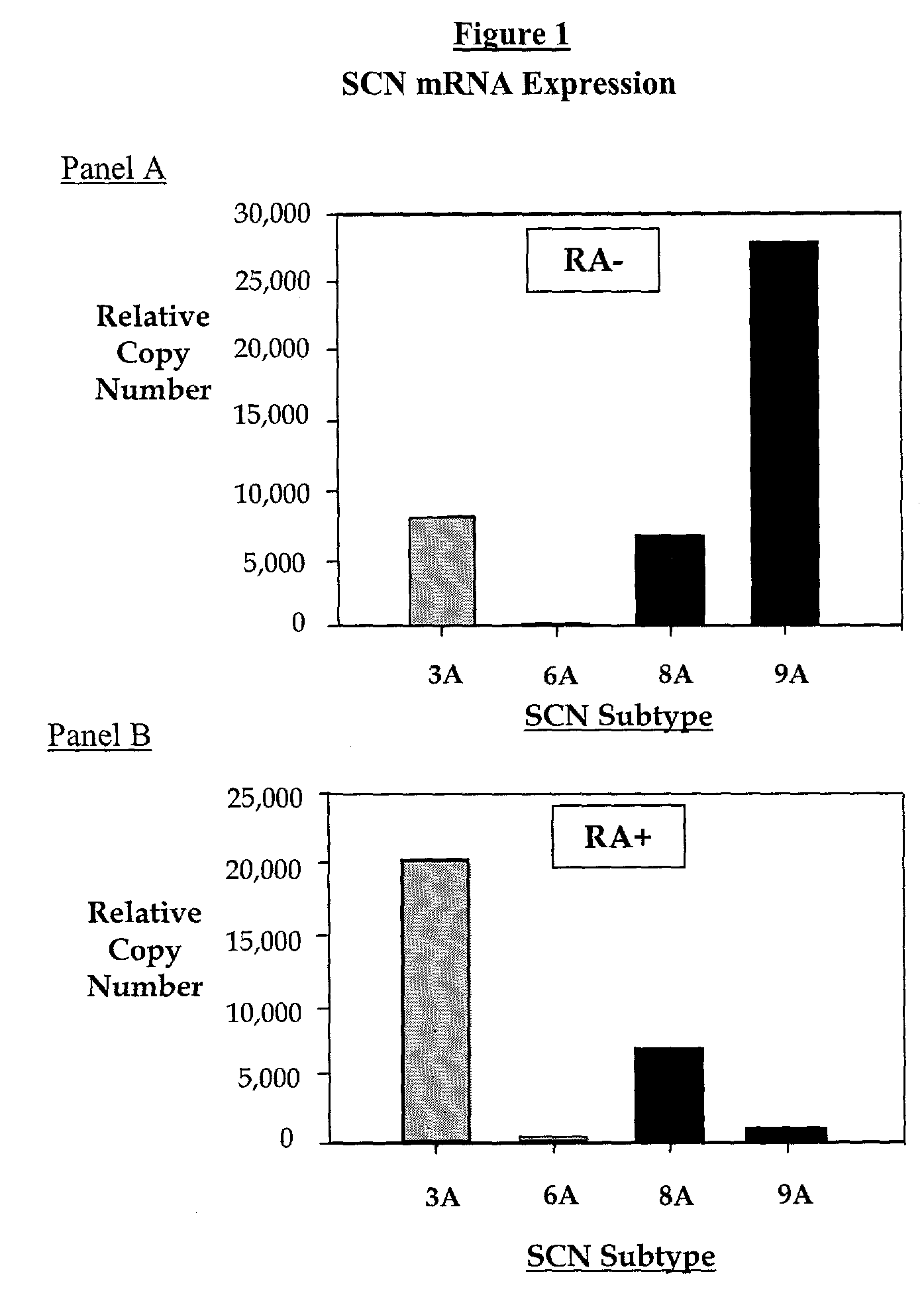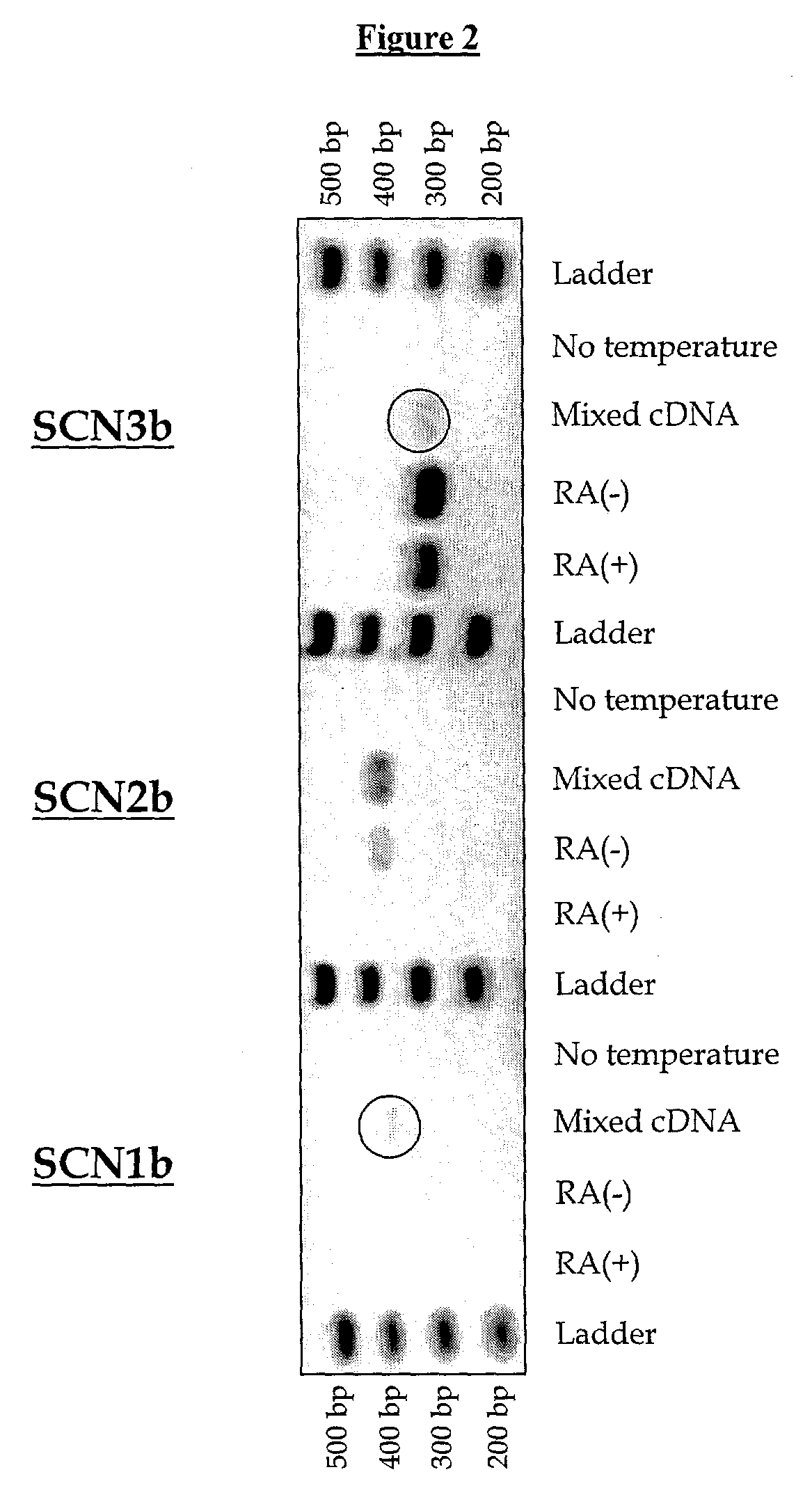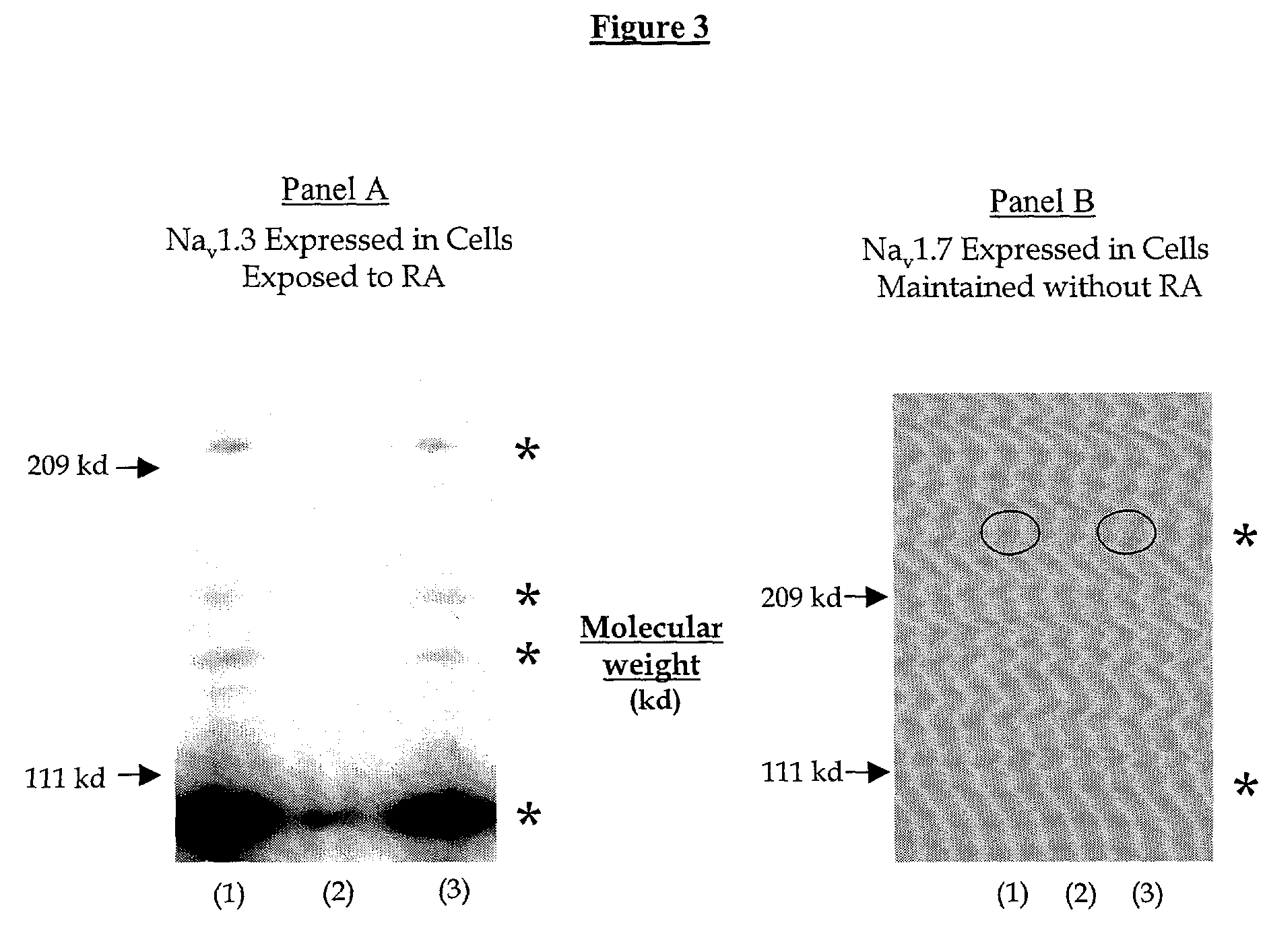Method for identifying modulators of NAv ion channels
a technology modulator, which is applied in the field of method for identifying modulators of nav ion channel, can solve the problem of slowing down the target-driven therapeutic design
- Summary
- Abstract
- Description
- Claims
- Application Information
AI Technical Summary
Benefits of technology
Problems solved by technology
Method used
Image
Examples
example 1
Exposure Of IMR-32 Cells to RA Alters the Expression of a Populations of TTX-S Sodium Channel Alpha Subunits Revealing an Up-Regulation of Nav1.3 and Down-Regulation Of Nav1.7 mRNA
Cell Culture
[0060]IMR-32 cells (American Tissue Culture Collection #CCL-127, Manassas, Va.), stored at −140° C. in freezing media (90% fetal bovine serum, 10% DMSO), were rapidly-thawed at 37° C., washed in normal IMR-32 medium (Eagle's minimum essential media containing Hanks balanced salts, 1.5 gram / liter sodium bicarbonate, 1 mM sodium pyruvate, 0.1 mM non-essential amino acids, 2 mM L-glutamine, 10% fetal bovine serum) to remove the DMSO and centrifuged at 1000 rpm for two minutes at 4° C. to pellet the cells. The cell pellet was re-suspended in fresh IMR-32 medium, plated in a 150 cm2 tissue culture flask and incubated at 37° C. in 5% CO2 until confluent. Confluent cells were washed in calcium-free phosphate buffer, treated with 0.02% trypsin until dislodged and serially-passed into 150 cm2 tissue cul...
example 2
Cell-Based Assay Using Voltage Sensitive Dyes to Measure Nav Activity in IMR-32 Cells
[0067]IMR-32 cells cultured in growth medium (Eagles minimal essential media, 2 mM L-glutamine and Earle's BSS adjusted to contain 1.5 g / L sodium bicarbonate, 0.1 mM non-essential amino acids, 1.0 mM sodium pyruvate, 1 μM RA) are plated (40 μl per well) at a density of 5.5×106 cells per 384-well plate and incubated for eighteen to twenty-four hours at approximately 37° C. in 5% CO2. IMR-32 cells were plated on tissue culture-treated plates without poly-D-Lysine since prolonged exposure to poly-D-lysine (e.g. commercially prepared cell culture plates) reduced cell adhesion and viability. The saline used in most studies was 2K / 2 Ca buffer, and it contained (in mM): 130 mM NaCl, 2 mM KCl, 1 mM MgCl2, 2 mM CaCl2, 20 mM HEPES, pH 7.4. On the day of the assay, 20× voltage-sensitive dye (Molecular Devices, Sunnyvale, Calif.; catalog # R8034) was diluted 1:10 in 2K / 2 Ca saline supplemented with barium chlor...
example 3
Exposure of IMR-32 Cells to RA Alters the Expression of Populations of TTX-S Sodium Currents Consistent with an Up-Regulation of Nav1.3.
Electrophysiological Recordings from IMR-32 Cells
[0070]The endogenous voltage gated Na currents expressed in IMR-32 cells grown in the presence or absence of 1 μM RA were measured using standard whole cell voltage clamp techniques (Hamill et al. (1981). The whole cell patch clamp technique was used to record voltage-activated currents from IMR-32 cells maintained for two or more days on 12 mm glass coverslips in the presence or absence of RA (1 μM). Cells were visualized using a Nikon Diaphot 300 with DIC Nomarski optics. The standard physiological saline (1 Ca tyrodes (“Tyrodes”) contains: 130 mM NaCl, 4 mM KCl, 1 mM CaCl2, 1.2 mM MgCl2, and 10 mM hemi-Na-HEPES (pH 7.3, 295–300 mOsm as measured using a Wescor 5500 vapor-pressure (Wescor, Inc., Logan, Utah)). Recording electrodes are fabricated from borosilicate capillary tubing (R6; Garner Glass, C...
PUM
| Property | Measurement | Unit |
|---|---|---|
| membrane potential | aaaaa | aaaaa |
| inactivation time constant | aaaaa | aaaaa |
| voltage | aaaaa | aaaaa |
Abstract
Description
Claims
Application Information
 Login to View More
Login to View More - R&D
- Intellectual Property
- Life Sciences
- Materials
- Tech Scout
- Unparalleled Data Quality
- Higher Quality Content
- 60% Fewer Hallucinations
Browse by: Latest US Patents, China's latest patents, Technical Efficacy Thesaurus, Application Domain, Technology Topic, Popular Technical Reports.
© 2025 PatSnap. All rights reserved.Legal|Privacy policy|Modern Slavery Act Transparency Statement|Sitemap|About US| Contact US: help@patsnap.com



